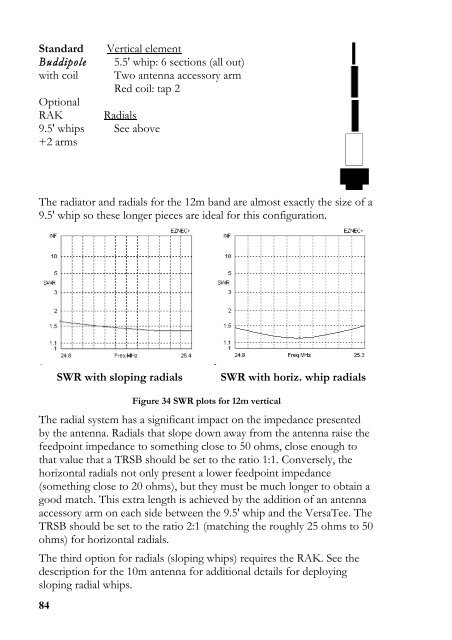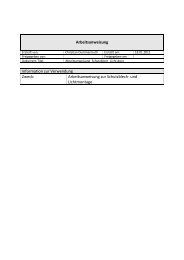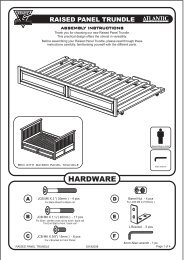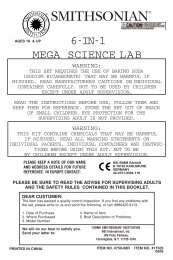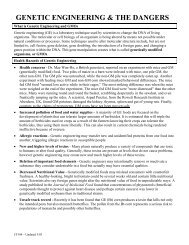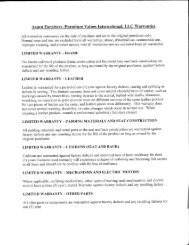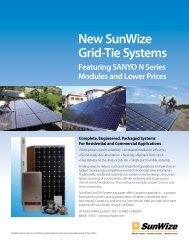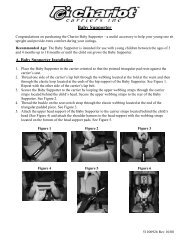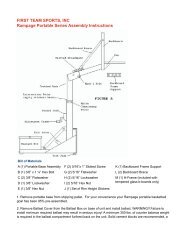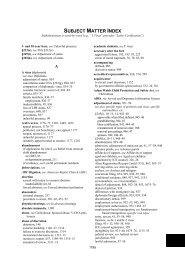BUDDIPOLE IN THE FIELD
BUDDIPOLE IN THE FIELD
BUDDIPOLE IN THE FIELD
You also want an ePaper? Increase the reach of your titles
YUMPU automatically turns print PDFs into web optimized ePapers that Google loves.
Standard<br />
Buddipole<br />
with coil<br />
Optional<br />
RAK<br />
9.5' whips<br />
+2 arms<br />
Vertical element<br />
5.5' whip: 6 sections (all out)<br />
Two antenna accessory arm<br />
Red coil: tap 2<br />
Radials<br />
See above<br />
The radiator and radials for the 12m band are almost exactly the size of a<br />
9.5' whip so these longer pieces are ideal for this configuration.<br />
SWR with sloping radials<br />
SWR with horiz. whip radials<br />
84<br />
Figure 34 SWR plots for 12m vertical<br />
The radial system has a significant impact on the impedance presented<br />
by the antenna. Radials that slope down away from the antenna raise the<br />
feedpoint impedance to something close to 50 ohms, close enough to<br />
that value that a TRSB should be set to the ratio 1:1. Conversely, the<br />
horizontal radials not only present a lower feedpoint impedance<br />
(something close to 20 ohms), but they must be much longer to obtain a<br />
good match. This extra length is achieved by the addition of an antenna<br />
accessory arm on each side between the 9.5' whip and the VersaTee. The<br />
TRSB should be set to the ratio 2:1 (matching the roughly 25 ohms to 50<br />
ohms) for horizontal radials.<br />
The third option for radials (sloping whips) requires the RAK. See the<br />
description for the 10m antenna for additional details for deploying<br />
sloping radial whips.


